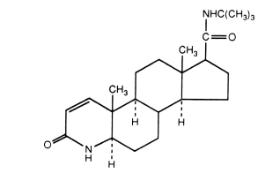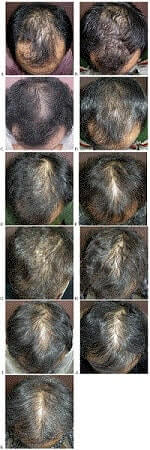Ever since I first started taking Finasteride a decade ago, I have always been wary of side effects. I therefore decided to be cautious and take around half the recommend dose. i.e., 1.25 mg Finasteride once every two days instead of 1 mg every day. I stuck to generics and did not take the more expensive brand name Propecia.
Some people prefer natural DHT blockers. Although these are far less effective than Finasteride, they are usually side effect free. Note that I am aware that there are numerous people who take 5 mg of Finasteride (Proscar) per day for enlarged prostates. They generally seem to get limited to no side effects based on various studies, so perhaps I am overly cautious.
Edit: I now take the much stronger Dutasteride to treat my hair loss.

At the same time, there are also many hair loss sufferers who have taken 1 mg per day and complain about persistent side effects even after stopping the medication.
However, as a percent of all people who take Finasteride, this number is tiny. Nevertheless, it still makes me err on the side of caution. Recently, I tried to find out exactly how Finasteride impacts estrogen and testosterone levels in men.
Finasteride and Estrogen
Finasteride raises estrogen (aka the female hormone) levels. This tends to be the number one concern of people taking the drug when it comes to side effects. Higher levels of estrogen (oestrogen) in men can result in feminizing effects.
These include gynecomastia (enlarged breasts in men), increased body fat levels and sexual problems. Note that estrogen can also lead to hair growth. That is why male to female transgender persons take estrogen injections or patches.
For years, I was curious as to how much estrogen levels go up by in men who are on Finasteride. Do they go up to levels found in women (that would be scary)? What are the typical estrogen levels in men and in women? After spending a good amount of time, I finally found my answer in an official brochure from the manufacturer of Propecia, Merck.
In there, it states the following: “mean circulating levels of testosterone and estradiol were increased by approximately 15%“. Estradiol is essentially the same as Estrogen (see next paragraph). However, now I needed to find out how estrogen levels in men that go up by 15% compare to levels in women.
Types of Estrogen
There are three types of naturally occurring estrogens in women:
- Estrone (E1).
- Estradiol (E2).
- Estriol (E3).
Estradiol is the most important estrogen in non-pregnant females prior to menopause, estriol is the most important one in pregnant females, and estrone if the most important one after menopause. Estradiol is the most potent of these three estrogens.
Blood tests for estrogen generally look at estradiol levels. Men’s estradiol levels range from 15-60 pg/ml over the course of their lifetimes. For women, the range varies significantly throughout their life, including during each menstrual cycle. A female’s lifetime estradiol range is from 20-400 pg/ml, with post-menopausal levels being similar to those in men.
Various sources I checked show slightly different estimates for the above ranges, but in general, women have significantly more estradiol then men prior to menopause. It should be noted that while women’s estrogen levels are primarily manufactured by the ovaries, men’s levels are attained via the aromatase reaction that converts testosterone to estrogen.
From the above numbers, one can deduce that in young adult males, Finasteride will result in estradiol levels rising from say around 35 pg/ml to around 40 pg/ml (i.e., 15 percent increase). This finding makes me a bit more comfortable in continuing to take Finasteride. I also vaguely remember taking a blood test in the past in which one of the measurements was for prolactin. My levels were normal despite my taking Finasteride 1.25 mg every two days at the time. Abnormal levels of prolactin indicate that something is wrong with your testosterone and/or estrogen levels (for both men and women).
Finasteride and Testosterone
Finasteride reduces the conversion of testosterone to dihydrotestosterone (DHT), resulting in higher levels of circulating testosterone. According to the earlier mentioned Merck brochure on Propecia, Finasteride also increases circulating testosterone levels by 15%. Considering that men start to lose testosterone levels starting in their 20s, this is perhaps not such a bad thing. In fact an increasing number of older people take testosterone supplementation, and the most famous example is the incredible 77 year old Dr. Jeffry Life.
Update: A 2019 study from the US concluded that 5α-Reductase Inhibitor therapy is not associated with consistent and significant increases in serum testosterone levels.
Note that testosterone supplementation is a very controversial subject, and I would not try it. High levels of testosterone are linked to death from heart attacks. I also think I am getting more adult acne due to taking Finasteride, although I am not 100 percent certain about the culprit. Many hair loss forum members have wondered if the slight increase in testosterone when on Finasteride helps one gain a bit more muscle mass when working out. Also see this page for ranges on average and free testosterone levels in men and women.
Testosterone to Estrogen Ratio
While the 15 percent rise in circulating testosterone and estrogen levels in men taking Finasteride 1mg per day does not seem much to me, it is important to also watch out for the testosterone to estrogen ratio in case you ever get blood tests done. It is quite possible that some people will see a significantly higher increase in circulating testosterone than in circulating estrogen (or vice versa) when on Finasteride. The subsequent change in this T/E ratio can have a big impact on your side effects. Various reports suggest that when the testosterone to estrogen ratio changes significantly, one can often get unexpected side effects.
Hormones
Numerous reports I have read seem to suggest that women’s higher levels of estrogens protect them to some extent from various serious medical problems such as heart disease. However, higher estrogen levels in women also mean substantially higher rates of breast cancer in comparison to men. Ultimately, the pros outweigh the cons. Low testosterone and high estrogen are among the main reasons that women outlive men by around five years on average.
Many hair loss forum members (and body builders) take an aromatase-inhibiting prescription drug called Arimidex. It supposedly prevents estrogen levels from rising when on Finasteride. I would never add yet another drug to my life, considering how much I hate taking just one at the moment. Arimidex does seem to be a fairly popular and safe drug as far as I can tell. It is still best to consult your doctor or dermatologist first before taking such drugs.
Finally, make sure to read my post on dutasteride (Avodart) and finasteride (Propecia) dosage discussion. Some of the reader comments in there are very useful.
